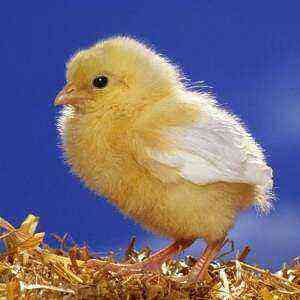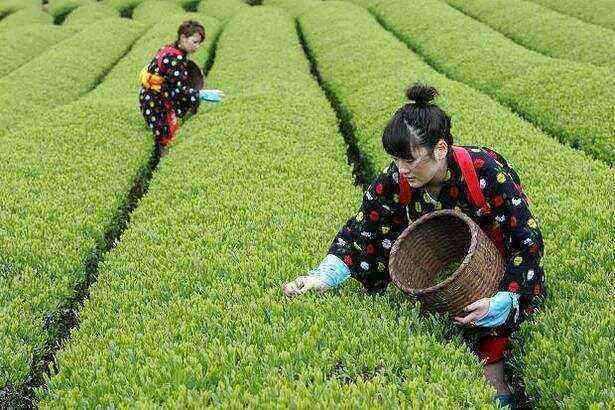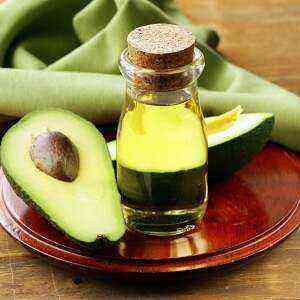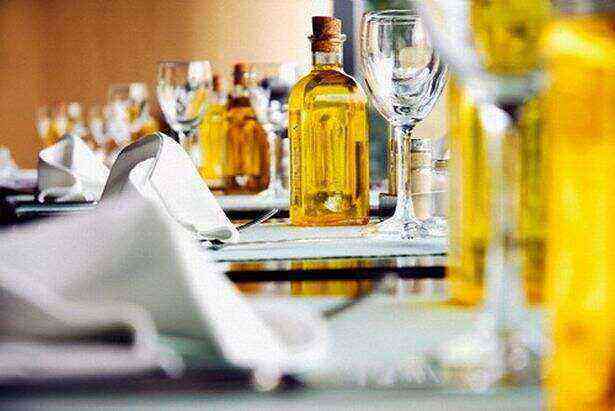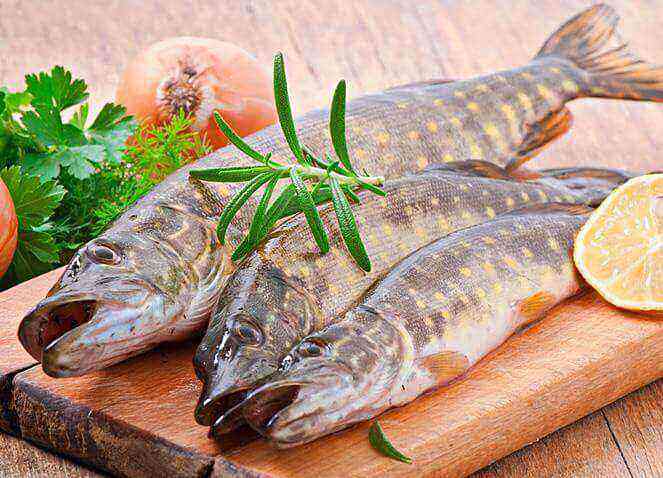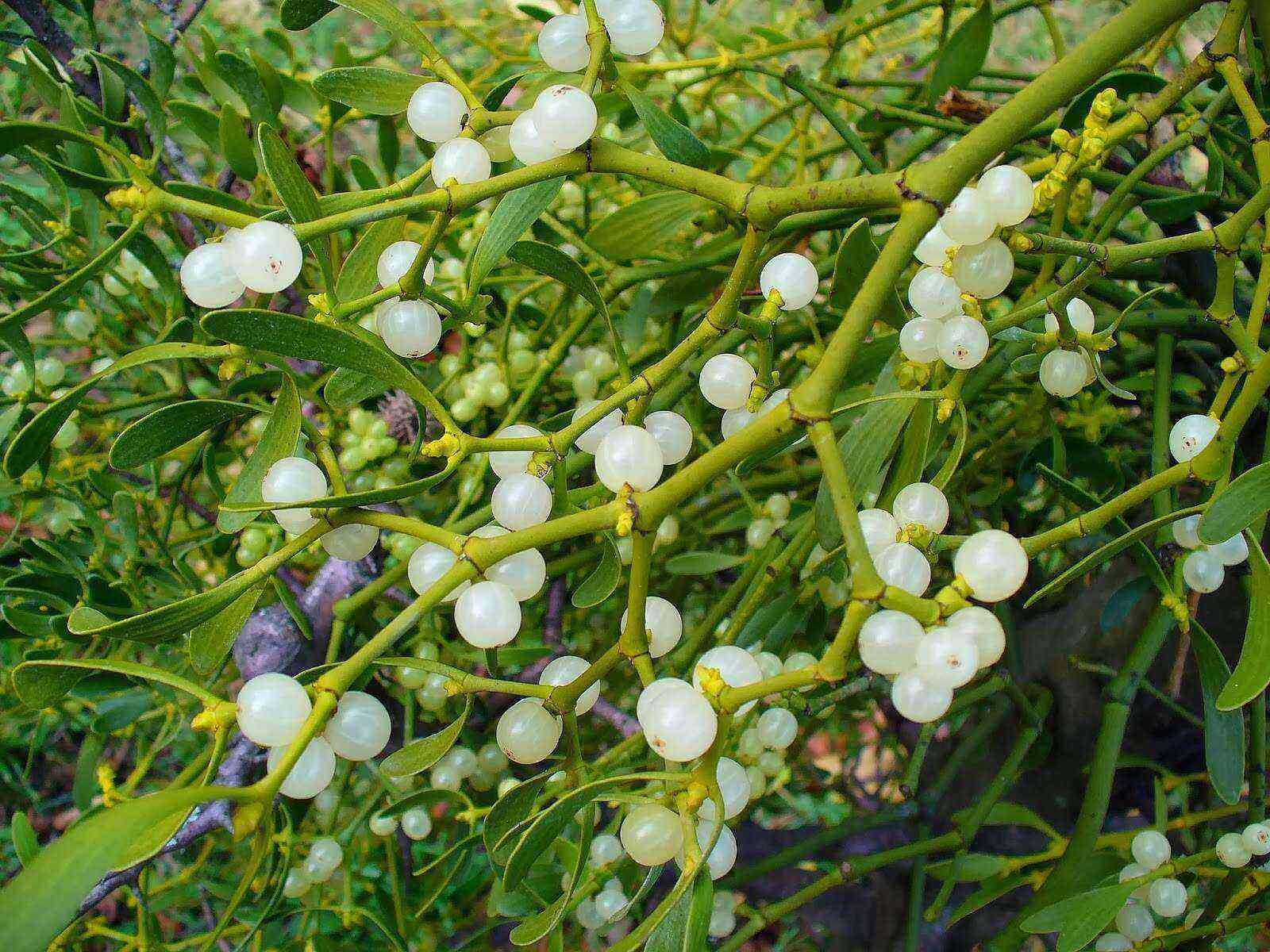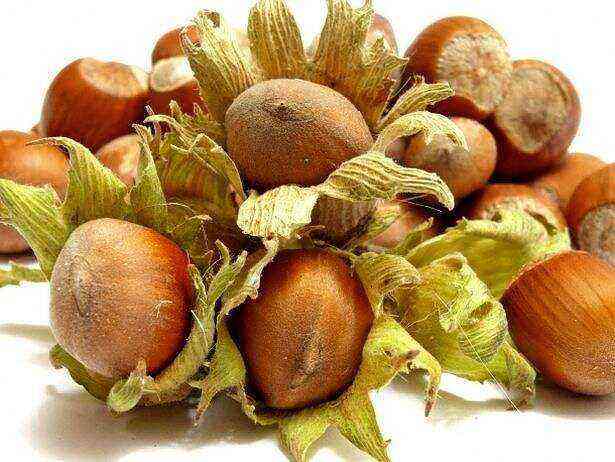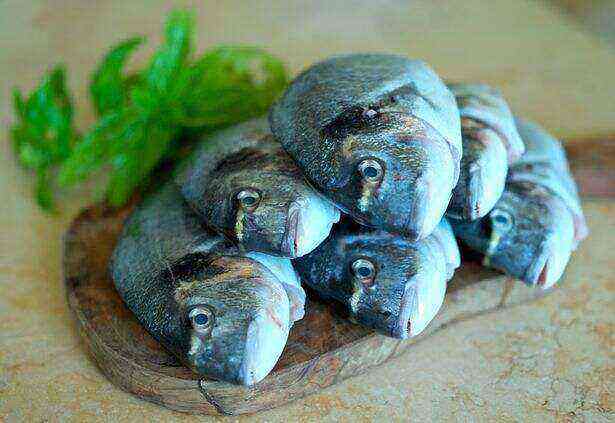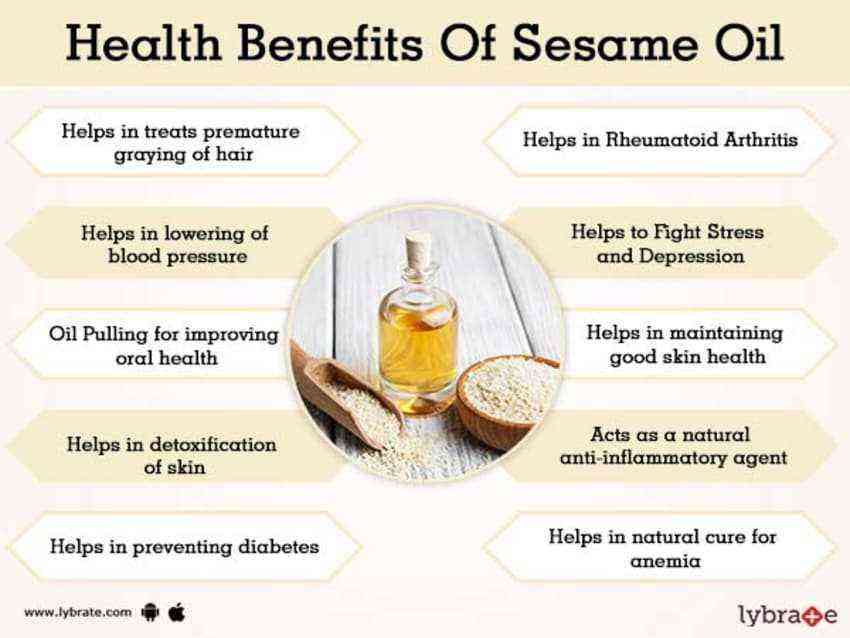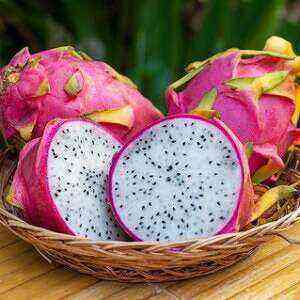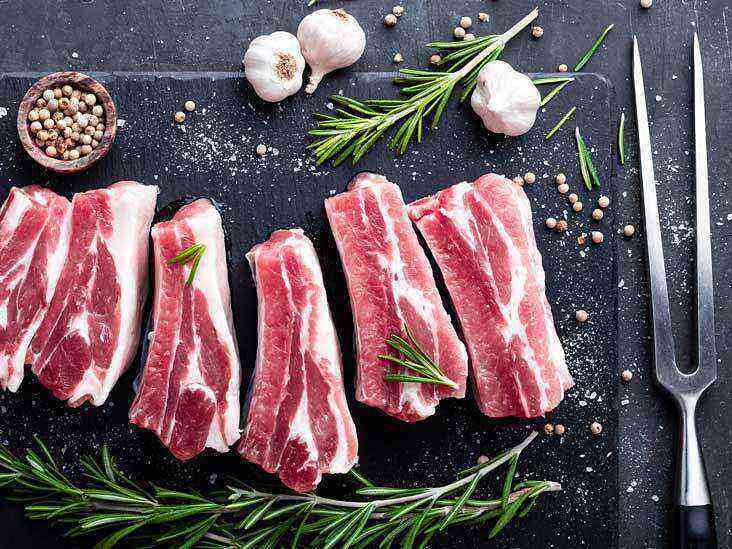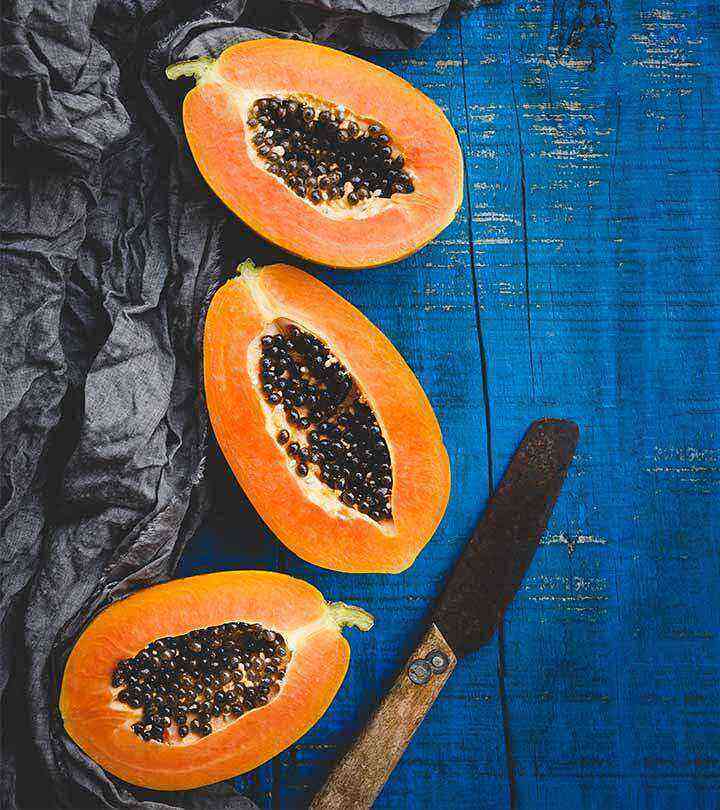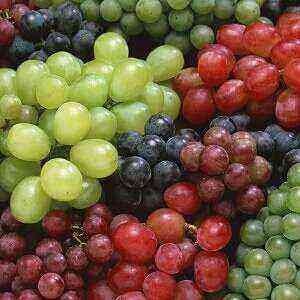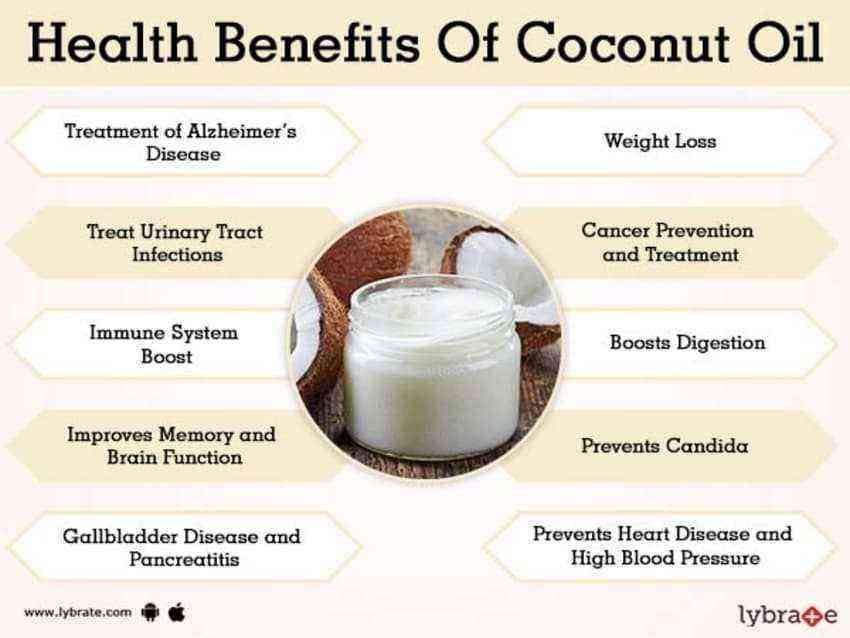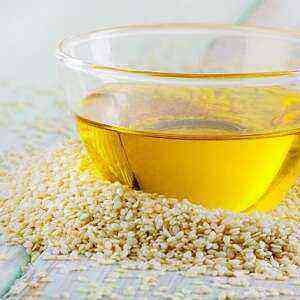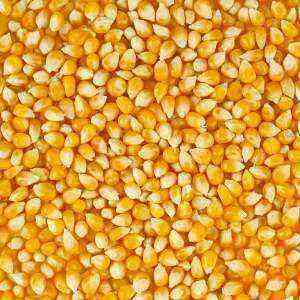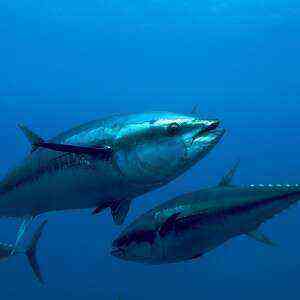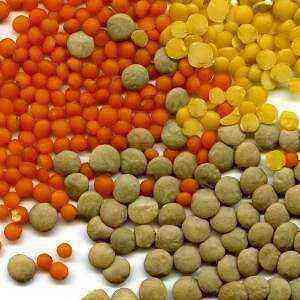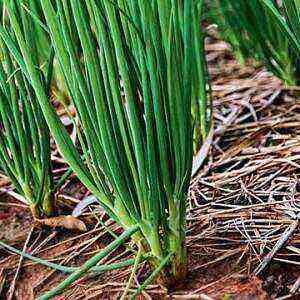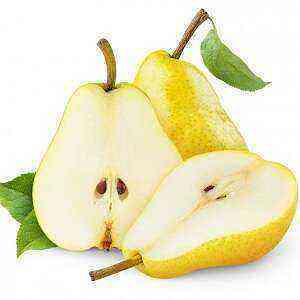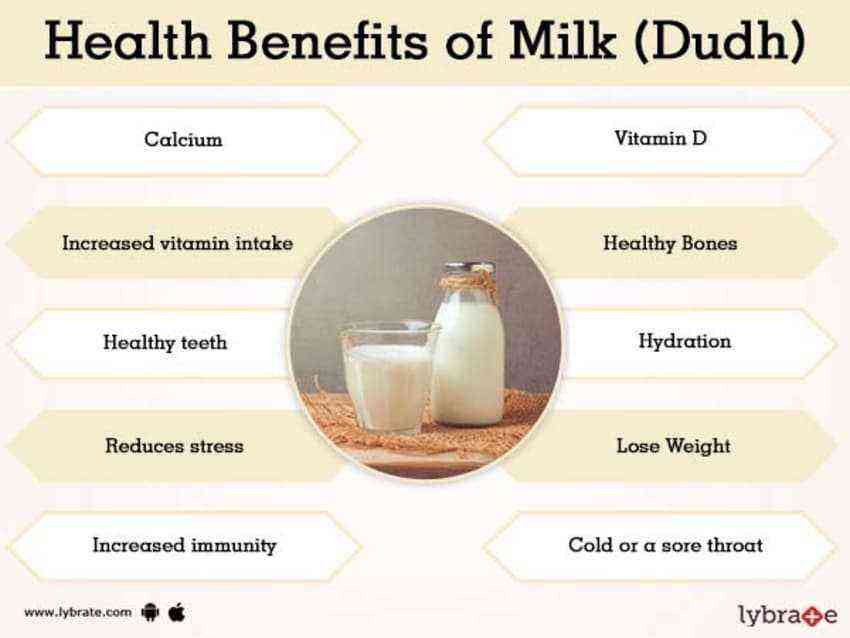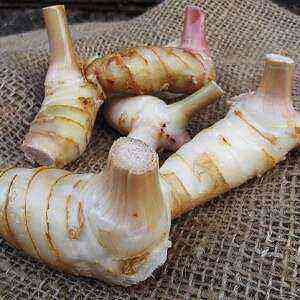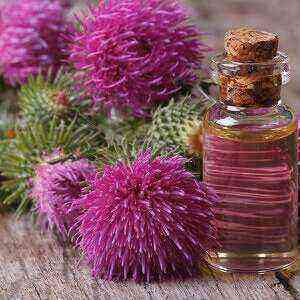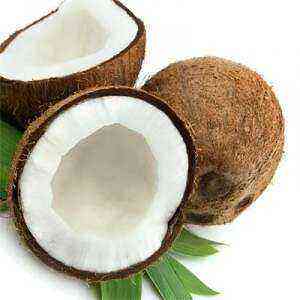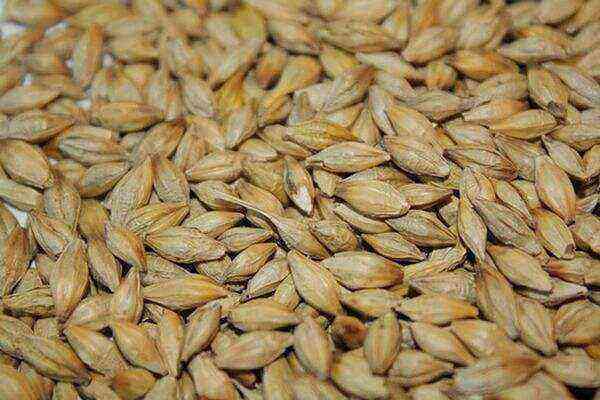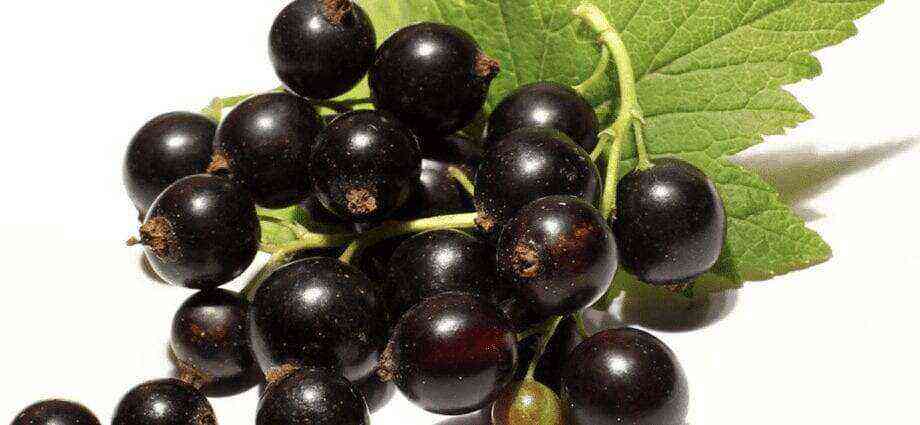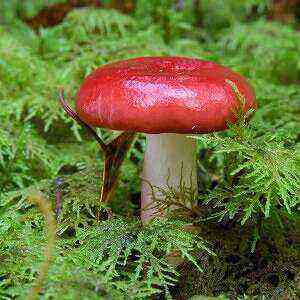
Russula is a large mushroom with a hat, the plates of which are white or yellowish in color. They should not be brown, black or red as this indicates an inedible look. Russula grow on the ground under bushes and trees.
Mushrooms are harvested from June to October. All types with a mild taste are suitable for food.
Fresh russula supply the body with vitamins B1, B2, C, E, PP, lecithin, the enzyme rasulin, potassium, calcium, magnesium, sodium, phosphorus, and iron.
The rich chemical composition determines the beneficial properties of the product: it normalizes the concentration of cholesterol in the blood, cleanses the body of toxins, toxins, prevents blood clots, thrombus formation, and has antibacterial properties.
Botanical description
Russula – cap mushrooms growing on a straight stem, without tubers and rings. In young representatives, the apex is hemispherical, which straightens with age, becomes flat, reaching 10 centimeters in diameter. The russula are widespread everywhere: in a rare birch forest, in a pine and deciduous forest, on the side of the road, on a mossy shore, on the edge. The best period for collecting forest beauty is August-September.
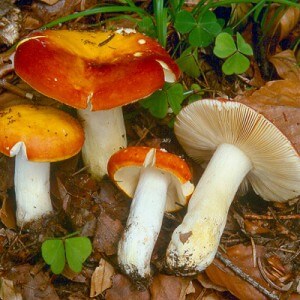
- Hat. Initially, it has a bell-shaped, hemispherical, spherical configuration, later it becomes funnel-shaped, flat or prostrate, less often – convex. The edge of the cap is striped or ribbed, curled or straight. The skin is of various colors, shiny or dull, dry, less often moist, adherent, easily separating from the pulp, sometimes cracking.
- Plates. Descending or free, adherent, notched, of equal or unequal length, frequent, sometimes sparse, forked-branched. The color of the plates is white, yellowish, the edges are obtuse, pointed, depending on the species.
- Leg. White or colored, cylindrical, even, rarely pointed, thickened at the base, dense or hollow inside.
- Pulp. White, does not change color with age and on the cut, spongy, fragile, dense in the stem, with a mild subtle taste. Burning, pungent notes indicate that the mushroom is poisonous and unsuitable for human consumption.
- Spore powder. The color ranges from white to dark yellow.
Russula – edible in 90% of cases, some have a bitter taste, which, as a rule, disappears after heat treatment and soaking.
It is not recommended to eat mushrooms raw, as they irritate the mucous membranes of the digestive system, can lead to vomiting, poisoning and intoxication of the body.
Popular edible species
- Food russula. The cap of the mushroom is fleshy, uneven in color, finely reticulate-wrinkled, reddish, white-pink. In the middle it is brownish, buffy. The diameter reaches 5 – 10 centimeters. The edges of the cap are slightly ribbed or smooth, the plates are frequent, of the same length, yellowish-white, branched at the stem. Fruiting in July-October. Similarly, the mushroom can be confused with herring russula, the latter, in turn, has a pronounced fishy smell.
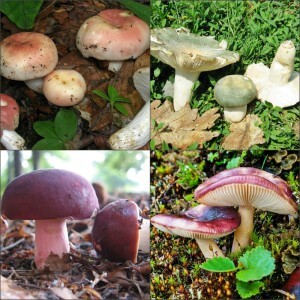
- Russula are greenish (scaly). This is the most delicious type of mushroom among all the existing ones. All kinds of blanks are made of them, subjected to all types of culinary processing, with the exception of drying. The hat of the scaly russula is green, sometimes with a bluish tinge, fleshy, with a tightly adherent skin. Its surface is thick, dry, rough, warty, cracking with age, reaching 5 – 12 centimeters in diameter. The plates are white, sometimes with a yellowish tint. The pulp is dense, fragile, emits a pleasant mushroom smell. The leg is white, furrowed, becomes brown with age. At the break, the russula changes color, becomes a rusty color. The fruiting period is July – October.
According to the conclusion of Chinese biochemists, R. Virescens extract has a beneficial effect on the regulation of blood lipids. With regular use of the mushroom for 30 days, there is a decrease in triglycerides, total cholesterol. In addition, the level of serum, hepatic malondialdehydes decreases, the content of the enzyme superoxide dismutase increases.
The main useful property of this species of russula is the ability to suppress Ehrlich’s carcinoma and Sarakoma-90 by 180%.
- Brown russula. The cap of the mushroom is dark red, brown-ocher, yellowish, olive, burgundy with a purple-brown or black center, strongly convex. Reaches 5 – 15 centimeters in diameter. Sometimes with a purple edge wrapped inward. The plates are soft, branched at the stem of a cream, ocher or brown color, turn brown when pressed. When broken, the flesh is white, after a while it darkens, the leg has a herring smell, which intensifies towards the base, the cap has a crab or nutty taste. The leg is white, rarely with rusty blotches, it can be pink or red.
Brown russula is characterized by a rich amino acid and protein composition. The extract from fresh fruit bodies inhibits the growth of the pyrimethamine-resistant malaria parasite, Plasmodium falciparum.
- The russula is blue-yellow. A distinctive feature is a variety of colors, which can be multi-colored, blurred. The color of the cap varies from purple, blue to dark green, red-brown, the diameter reaches 15 centimeters. The surface of the mushroom is sticky, shiny, with a ribbed edge. The pulp and stem are white, the plates are flexible, completely unbreakable. Fruiting from June to October.
Polysaccharides of the fruit bodies of the fungus have antitumor, antioxidant activity.
- Olive russula (herring). The cap is convex, outstretched, 5 – 12 centimeters in diameter, naked, slightly mucous, depressed in the center, with a ribbed edge. The pulp is white, turns brown with age. The peel is easily detached from the cap. Olive russula gives off a characteristic herring smell, which is especially felt in aging mushrooms at the base of the stem. The plates are frequent, adherent to the leg, white. With age, they become creamy, with pressure they turn brown. The leg thickness is 2 centimeters, the height is up to 10 centimeters, the surface is smooth, dirty pinkish yellow or white.
Fruiting in July-August.
Used for salting, pickling, making soups, frying.
Healing properties and contraindications
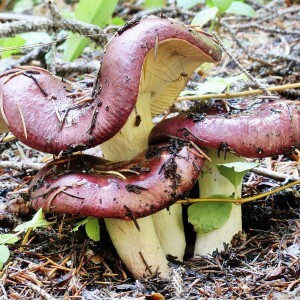
The benefits of forest gifts for the human body can hardly be overestimated. Interestingly, in ancient times, mushrooms were used by folk healers to treat various ailments: frostbite, boils, headaches, psychoemotional disorders.
The effect of russula on the human body:
- Provide vitamins, minerals, protein. Interestingly, to satisfy the body in protein, it is enough to eat 150-200 grams of dried mushrooms per day. This property looks especially attractive for vegetarians and raw foodists who suffer from a lack of protein in the diet due to the exclusion of meat products from the menu.
- Strengthen immunity, prevent cancer due to the content of selenium.
- They clean the blood vessels, prevent the formation of cholesterol plaques, blood thickening, the formation of blood clots, which are the reasons for the development of cardiovascular pathologies.
- They normalize metabolism, remove excess fluid from the body, and promote weight loss.
- They prevent emotional disorders, mental exhaustion, and calm the nervous system.
- Improves the condition of teeth, nails, hair, skin, bones.
- Cleanse the stomach and intestines (adsorb harmful substances from the body).
Interestingly, mushroom juice is used externally in the fight against corns (horny skin of the legs). A safe daily dose of russula for a healthy adult is 150 grams. Be extremely careful when collecting gifts from the forest so as not to pluck poisonous specimens.
Russula, like other types of mushrooms, belong to the category of hard-to-digest foods. Despite the medicinal properties of the product, they are not recommended for people with acute inflammatory processes of the digestive system, impaired liver and heart functions, with individual intolerance, children under 7 years old, pregnant and lactating women.
When to collect?
The russula grows on the edges, glades, in all forests. The first young mushrooms appear in June, and the most fruitful season is in August. The most delicious russula with yellow and green caps. Do not collect overgrown gifts of nature, they accumulate harmful foreign substances from the environment. Fresh, young mushrooms that are not bitten by insects are suitable for food. Throw away wormy specimens immediately.
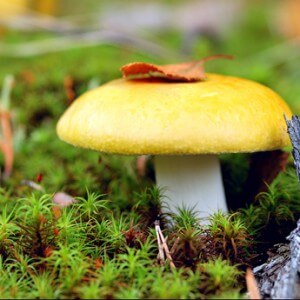
Safety regulations:
- Do not pick a mushroom without identifying it. Collect only those specimens in which you are sure, otherwise you can cut off an inedible poisonous product that can cause intoxication of the body and even lead to death.
- All russula on the inside have white plates, white legs, without scales, films, rings. Cut mushrooms practically do not change color. They remain white (rarely, they barely turn yellow).
- If it rained profusely in the summer, give up picking mushrooms, since they have become saturated with water, lost their taste, and released toxic substances.
- After harvesting, the mushrooms are re-sorted to identify “random” unusable specimens, then placed in a cool salty solution for an hour or three to eliminate insects and bitter taste.
- Before eating russula in food, they are subjected to reliable heat treatment! Never consume the product raw!
The mushrooms are harvested in the morning before the sun warms them up. This way they will last longer. Cut specimens are immediately cleaned of debris, adhering needles, grass, earth and leaves, and placed in the basket with the hat down.
Mushroom equipment:
- a stick for searching for mushrooms;
- electronic GPS navigator;
- basket for mushrooms;
- disinfectant and plaster;
- telephone (to call the rescue service);
- basket and knife for mushrooms;
- water and sandwiches.
Remember, poisonous mushrooms are often disguised as edible ones, so before heading into the forest, refresh the information on how to distinguish a good specimen from a toadstool. Do not put your health at risk of death.
Mushroom is an insidious product, follow the safety rules!
Selection and storage

In the selection process, give preference to dense mushrooms, avoid old, dry specimens. The best quality and tastiest are blue-green or yellow russula.
After harvest, the crop retains its nutritional properties for the next 24 to 48 hours. It is believed that the mushroom is a perishable food that should be cooked right away. If the preparation of the dish is planned for the next day, then dry russula is placed in the refrigerator.
Dried mushrooms can be stored for up to 1,5 years. And salted and pickled no more than 1 year. Interestingly, after drying, forest bread retains useful amino acids and dietary fiber, only protein, which makes up 40% of the original amount, is removed.
Chemical composition
Russula is a dietary product rich in useful minerals, vitamins, elements. Mushrooms are digested in the body for a long time, creating a feeling of satiety, therefore, they are indicated for use by people (in boiled form) who have embarked on the path of fighting excess weight.
Table number 1 “Nutritional value of russula”
Components
Content in 100 grams of product
Calories 19 calories Water 90 grams Dietary fiber 5,5 grams Protein 1,7 grams Carbohydrates 1,5 grams Mono- and disaccharides 1,5 grams Ash 0,6 grams Omega-6 0,18 grams Omega-3 0,175 grams Saturated fatty acids (stearic, myristic, palmitic) 0,091 grams Omega-9 0,058 grams
Russula contain lecithin – the most important substance for the human body. It is a fat-like organic compound, a building material for cell membranes. Lecithin consists of 17% of nerve tissues, 30% of the brain and 50% of the human liver. It improves memory, strengthens brain activity, preserves the conductivity of nerve fibers, protects liver cells, normalizes the composition of bile, and strengthens the heart muscle. Without lecithin, the correct assimilation of fat-soluble nutrients (A, E, K, D) is impossible.
Cooking application

Before eating, the mushrooms are soaked for two hours, boiled for at least 5 minutes and only after that they are subjected to the main processing processes – pickling, salting or frying.
Russula are harmoniously combined with meat and vegetables. On their basis, vegetarian mashed soups, pie fillings, sauces are prepared. Russulas serve as an excellent side dish or served as an independent dish.
Salting mushrooms
Ingredients:
- Garlic – 3 cloves;
- bulb – 1 head;
- rock salt – 60 grams;
- vegetable oil – 45 milliliters;
- blueberries – 5 leaves;
- fresh edible russula – 1 kilogram.
Method of preparation:
- Clean the mushrooms from dirt, rinse, place in a container, sprinkle with salt.
- Peel the garlic, cut into small slices, add to russula, along with blueberry sprigs. Leave in a cool, dark place for 12 hours.
- Peel the onion, chop, mix with butter. Add to mushrooms. Mix the contents thoroughly.
- Fill the jars, place in the refrigerator. After a month, salted russula are ready to eat.
Pickling mushrooms
There are several ways to do this: with vinegar, garlic and onions.
Let’s consider each of them.
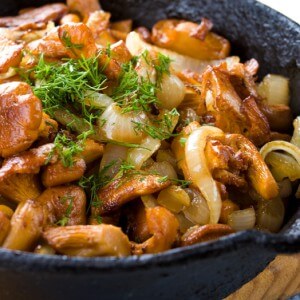
- Peel the mushrooms, cut the legs short, remove the foil from the cap if necessary.
- Pour boiling water over russula, boil for 5 minutes, cool, then discard in a colander.
- Sterilize the jars, put bay leaves, dill umbrellas, a sprig of tarragon, currant leaves on the bottom.
- Prepare the marinade: for 250 milliliters of water, you need 25 grams of rock salt and 50 milliliters of vinegar. Calculate the amount of brine you need based on the amount of mushrooms.
- Arrange the russula in the jars, fill with boiling marinade, tighten the lids.
Garlic pickling:
- Rinse, boil the mushrooms.
- Peel the garlic and chop into thin slices.
- In a saucepan, put the first layer of mushrooms with the cap down, sprinkle with salt and garlic, then the second, third. Please note that for 1 kilogram of russula you will need 15-20 grams of salt. The amount of garlic depends on individual preference.
- Keep the mushrooms in a cold place for 14 days. After 2 weeks, they acquire a spicy, rich taste. Well suited as a snack with vodka.
Remember, russula prepared in this way are not stored for a long time, they need to be eaten within 4 – 7 days.
Ingredients for pickling with onions:
- russula with hard caps – 1 kilogram;
- purified water – 400 milliliters;
- vinegar – 250 milliliters;
- sugar – 15 gram;
- cloves – 3 bud;
- bay leaf – 4 pieces;
- onions – 300 grams;
- rock salt – 20 grams;
- allspice – 5 peas.
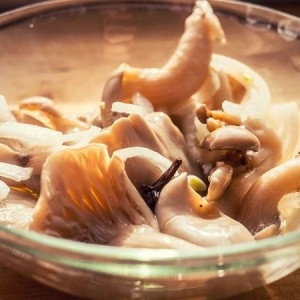
- Peel the mushrooms, soak, boil for 15 minutes, throw in a colander to remove excess liquid.
- Add sugar, salt, onion, the specified spices to 400 milliliters of water, bring to a boil. Pour vinegar into the spicy solution.
- Add russula to the resulting marinade. Cook for 5 minutes.
- Sterilize the jars.
- Distribute hot mushrooms in containers, fill with brine, cover with lids.
Cooking mushrooms
- Rinse, sort out the mushrooms, put in a saucepan.
- Pour cold water based on the ratio: 1 part of the product accounts for 2 parts of liquid.
- Place the saucepan on the stove, bring to a boil, remove the foam.
- Reduce heat, add black pepper, salt, bay leaf. Cook for 30 minutes.
Remember, in no case should you use the water in which the mushrooms were cooked, since during the heat treatment all harmful substances from the product have moved into the liquid. After cooking, immediately drain the broth and rinse the pan.
Russula chops
Choose mushrooms with large and flat caps (500 grams), soak in salted water, boil for 5 minutes, drain in a colander.
- Prepare the batter: mix flour (70 grams), water (60 milliliters), eggs (1 piece), salt, spices (to taste), mayonnaise (30 milliliters), grated garlic (3 cloves).
- Dip the hat into the mixture, then place in a hot skillet with vegetable oil.
- Fry on both sides until golden brown. Serve with vegetable salad.
Mushrooms stewed in sour cream
- Rinse, cut 450 grams of russula into slices, fry over high heat in vegetable oil for 5 minutes.
- Peel 2 heads of vegetable onions, chop into cubes.
- Slice a bunch of dill.
- Add onions and herbs to fried mushrooms, pour 450 milliliters of sour cream, 20% fat. Season with salt and pepper. Simmer covered for up to half an hour.
- Serve as a sauce (after passing through a blender) to rice, pasta or a separate dish.
Conclusion
Russula is the most common type of edible mushroom that grows in deciduous and coniferous forests. Currently, it is believed that they can be eaten raw, but this is not the case. Some species are inedible and have a pungent taste. One of the brightest representatives – “caustic russula”, which causes poisoning, intoxication of the body and, if consumed in large quantities, can cause death. Edible varieties (food, scaly, brownish, herring, blue-yellow) have a faint smell, sweetish-nutty taste, white leg and plates. A distinctive feature of russula is a very brittle pulp. To preserve the structure of the mushroom in cooking, it is scalded with boiling water.
Russula – forest bread that supplies the body with sodium, magnesium, calcium, iron, phosphorus, potassium, vitamins B1, B2, B3, E, C. The mushroom acts as an antibacterial agent, strengthens the immune system, helps in the fight for a slim body, prevents blood clots, thickening of the blood, normalizes the work of the cardiovascular system. Contraindicated in children under 7 years of age, pregnant and lactating women, people with impaired liver, kidney, stomach, allergy to the product.
A safe daily dose of russula per day is up to 150 grams.
If, after eating mushrooms, severe abdominal pain, nausea, vomiting, diarrhea, body temperature rise, hallucinations appear, and hands and feet become cold, urgently call an ambulance. These symptoms indicate poisoning, a serious condition that can pose a threat to human life. Before the arrival of the doctor, provide the victim with first aid – drinking plenty of fluids and sorbent (activated carbon).
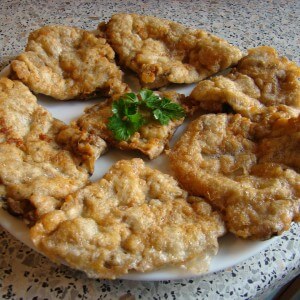 Choose mushrooms with large and flat caps (500 grams), soak in salted water, boil for 5 minutes, drain in a colander.
Choose mushrooms with large and flat caps (500 grams), soak in salted water, boil for 5 minutes, drain in a colander.